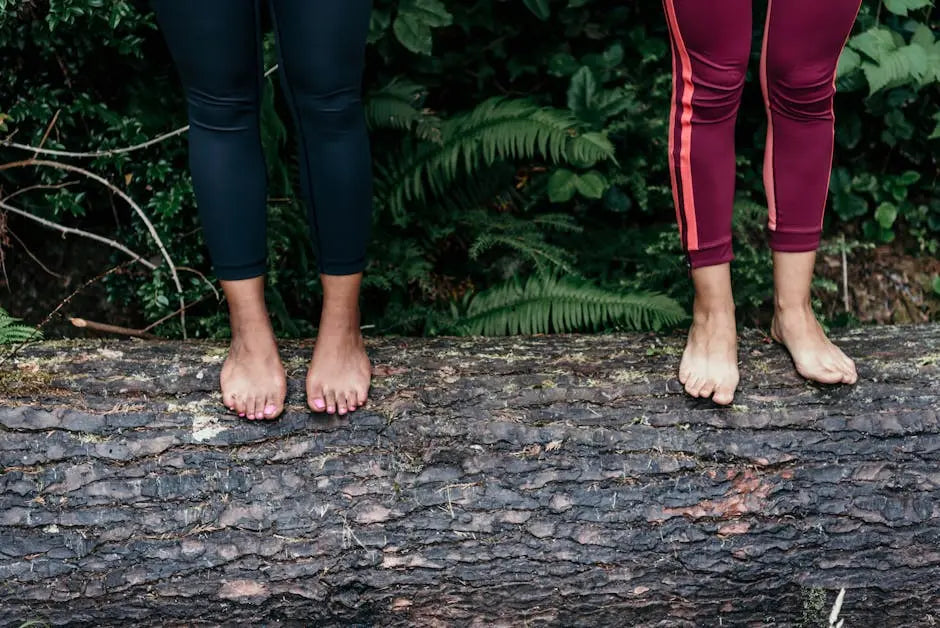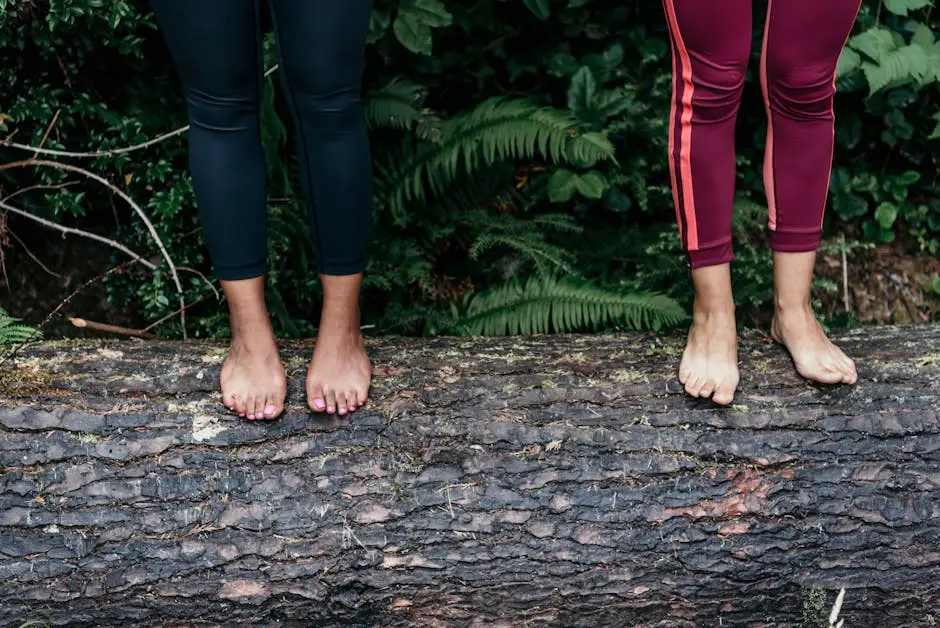
9 Tips to Choose the Perfect Barefoot Shoes for Women
Choosing the right pair of barefoot shoes can feel overwhelming, especially with so many options available. But fear not! I’m here to help you navigate the world of barefoot footwear with simplicity and ease, so you can find that perfect pair that feels just right.
1. Understand What Barefoot Shoes Really Are
Barefoot shoes mimic the feeling of walking barefoot while providing protection. Understanding this simple concept can guide your search for the right pair. Unlike conventional shoes that often encase your feet in thick, rigid soles, barefoot shoes offer minimal cushioning to facilitate the natural mechanics of your foot. This means less separation between your feet and the ground, fostering a more natural gait and better posture. A good starting point is understanding that these shoes are designed to provide the freedom and flexibility your feet need to move as they naturally should. With a diverse range of styles available, you can enjoy the benefits of barefoot technology whether you’re embarking on a hike or running errands in the city.
Barefoot shoes go beyond just being a trendy accessory; they redefine how you connect with the environment. Research shows that wearing barefoot shoes can significantly enhance your balance and proprioception—that is, your body’s ability to sense its position in space. Imagine how elevated your outdoor experiences can be, whether you’re taking a leisurely walk or an intense jog, when you’re fully engaged with every step you take. Essentially, barefoot shoes facilitate a more grounded and harmonious way of moving, and the closer you are to feeling barefoot, the more heightened your sensory awareness will be. That’s not just health; that’s a lifestyle transformation.
2. Consider Your Arch Type and Support Needs
Knowing whether you have high, medium, or low arches can greatly influence your choice. Barefoot shoes typically offer minimal arch support, so consider your comfort preferences. If you’re accustomed to heavy arch support, transitioning might seem daunting. A helpful approach is to start with a barefoot shoe that offers a bit more cushion or a transitional design, easing your feet into the minimalist experience. It’s essential to acknowledge how your foot behaves and feels without the additional support, thus allowing it to gradually strengthen. Building up the supportive muscles around your arch can lead to healthier feet over time.
3. Assess the Flexibility of the Shoe Sole
Look for shoes with soles that bend easily with your foot. Flexibility is key for promoting natural movement and comfort. A flexible sole adapts to varying terrains, allowing your foot to perform its natural functions without being restricted. Remember, flexibility doesn’t mean lack of protection; a well-designed barefoot shoe offers enough protection to navigate rough and uneven surfaces without compromising on feel and movement. Flexible soles also support dynamic movement, encouraging you to use foot muscles that may be underdeveloped. This utilization not only enhances your foot’s performance but also contributes to improved agility and balance.
4. Pay Attention to Toe Box Width
A wide toe box allows your toes to spread naturally, which is crucial for balance and foot health. Ensure there is enough space for your toes to wiggle freely. This design mimics the foot’s natural splay, which is essential for maintaining proper alignment and function. A cramped toe box in traditional shoes often leads to a host of complications like bunions and hammertoes. By allowing your toes to spread, barefoot shoes help foster a healthy foot structure. Imagine the freedom in each step as your feet can interact dynamically with the surface beneath you—offering not just comfort, but a therapeutic experience for your toes and arch.
The benefits of a wide toe box often extend beyond comfort—many users report significant reductions in foot pain and related issues. As the toes can move and flex, wearers experience improved circulation and overall health benefits. This ergonomic feature not only fosters better movement but is also a crucial consideration if your foot shape includes wider toes. For those seeking the best options for beginners, reviewing various shoe types and comparing toe box designs can greatly aid in finding the ideal barefoot shoe that meets both functional and aesthetic needs.
5. Consider Shoe Weight and Feel
Lightweight shoes that feel like a natural extension of your foot will enhance your barefoot experience. Look for a pair that doesn’t weigh you down. Minimalist shoes are designed to keep things feather-light, which reduces fatigue during prolonged activities. The beauty of lightweight shoes is that they provide the freedom and agility for you to move through life with little encumbrance. The purpose is to make you feel like you’re not wearing shoes at all, allowing for a connection with the terrain underfoot that encourages a more natural and efficient way of moving.
6. Choose Materials Wisely for Comfort
Opt for breathable and durable materials that align with your lifestyle and typical activities. Comfort is often determined by the materials used. Many barefoot shoes are composed of eco-friendly materials such as organic cotton or recycled rubber, which not only provide functionality but also contribute to sustainability. Breathability is crucial to avoid sweat accumulation and maintain foot hygiene, especially during intense activities. Additionally, materials should offer good resilience to wear and tear.
7. Ensure Proper Sizing and Fit
Try on different sizes and consider whether you might need a half size up or down. A proper fit is crucial to avoid discomfort and injury. Barefoot shoes tend to have a different sizing guide compared to conventional footwear, largely due to the wider toe box and flatter sole. It’s advisable to measure your feet after a long day when they are most swollen to ensure your shoes accommodate that size comfortably. Keep in mind that fit also involves feeling: a shoe should allow for adequate room without being too loose, ensuring stability for your foot’s natural movement.
8. Factor in Style and Aesthetic Preferences
While functionality is important, don’t forget about style. A shoe that you love to wear is just as important as it being functional. The variety in designs available means you’ll never have to sacrifice personal style for comfort. With options ranging from sporty to chic, it’s possible to find a pair that complements your wardrobe for any occasion—whether it’s a professional setting or a casual day out. Opt for designs that express your personal flair, making barefoot shoes a joyful addition to your lifestyle.
9. Read Reviews and Get Recommendations
Gain insights from other barefoot shoe enthusiasts. Reviews and personal recommendations can provide valuable information about comfort and durability. Online forums and communities are rich resources where you can learn about others’ experiences with specific brands or models. Consider joining supportive communities that value natural movement, where you can share tips and find motivation to embrace barefoot technology. Personal stories from others who have successfully transitioned can offer encouragement and practical advice, ensuring that you make a well-informed decision that meets your expectations.
- Choosing a selection results in a full page refresh.
!






















































